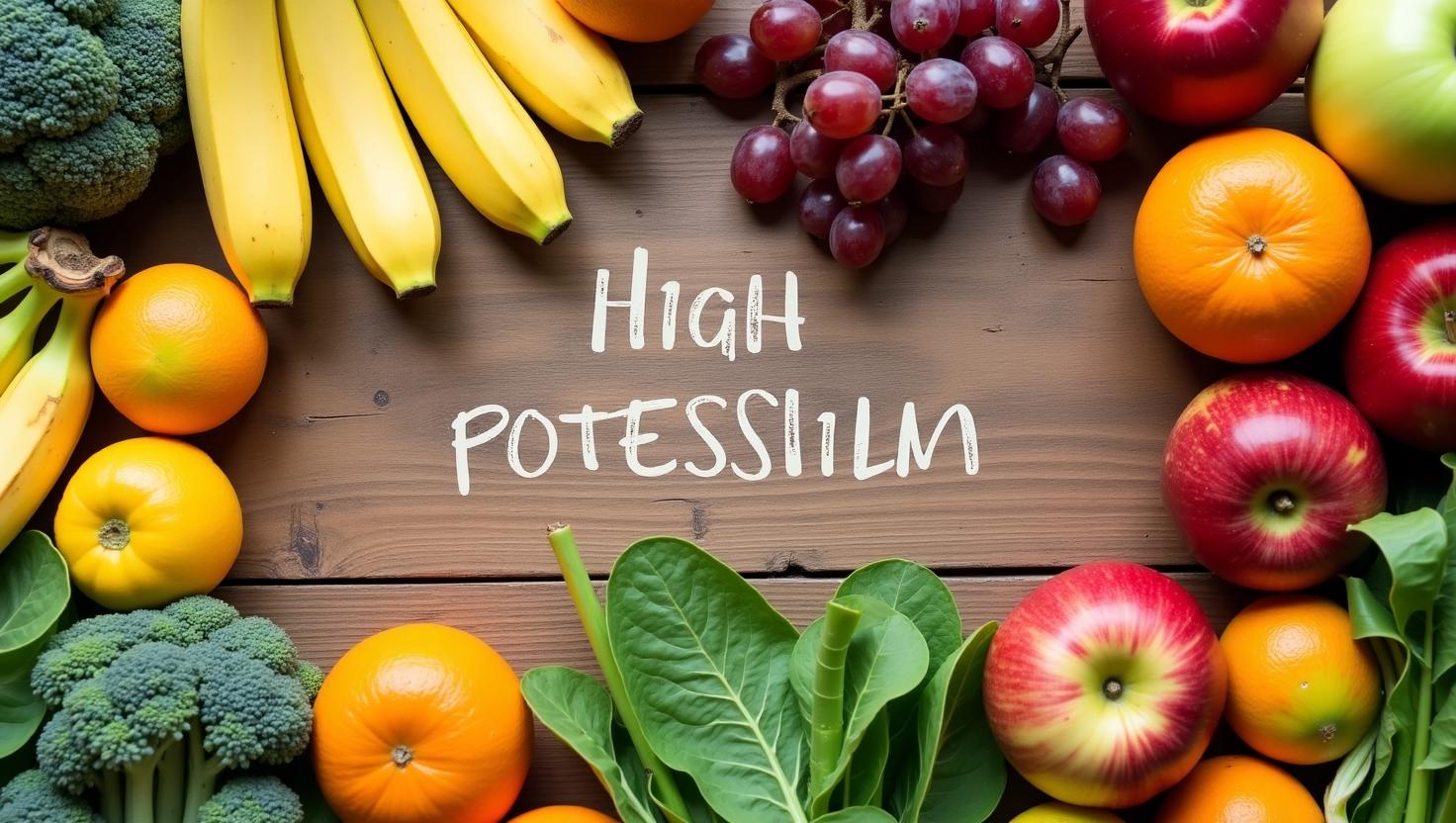
A healthy display of fruits and vegetables, including bananas, oranges, spinach, apples, grapes, and berries, representing both potassium-rich foods and low potassium fruits.
By Emma on August 28, 2025
Potassium is one of the most important minerals our body needs every single day. It helps regulate fluid balance, keeps our muscles working properly, and supports a healthy heart rhythm. When your potassium levels are in balance, you feel more energetic and your body functions smoothly. But when levels drop too low or rise too high, it can affect overall health and even become dangerous. That’s why knowing which foods contain potassium, as well as which fruits are considered low in potassium, is essential for people who are monitoring their diet—especially those with kidney disease or certain heart conditions.
In this post, we’ll cover foods that contain potassium, their health benefits, and provide a handy list of low-potassium fruits for people who need to limit their intake.
Why Potassium Matters
Potassium is classified as an electrolyte, which means it helps carry electrical signals throughout your body. These signals control muscle contractions, nerve communication, and heartbeats. Adequate potassium also helps reduce the harmful effects of sodium, lowering blood pressure and reducing the risk of stroke.
According to health guidelines, the recommended daily intake of potassium for an average adult is around 2,600–3,400 mg. Most people can meet this target through a balanced diet. However, some individuals—such as those with chronic kidney disease—may need to restrict potassium because their kidneys cannot efficiently remove excess amounts. For them, choosing low-potassium fruits and carefully tracking food choices is very important.
Foods That Contain Potassium
If you’re trying to increase your potassium intake, there are many natural and delicious options. Here are some of the best potassium-rich foods:
1. Fruits
-
Bananas – Probably the most famous potassium source. One medium banana provides about 420 mg.
-
Oranges and orange juice – A single orange offers around 240 mg.
-
Avocados – Half an avocado can give you over 350 mg.
-
Apricots (especially dried) – Fresh apricots are moderate in potassium, but dried ones are highly concentrated.
2. Vegetables
-
Spinach – One cup of cooked spinach has about 840 mg.
-
Sweet potatoes – A medium baked sweet potato contains nearly 540 mg.
-
Beets and beet greens – Both are rich in potassium.
-
Broccoli – Steamed broccoli has 450 mg per cup.
3. Legumes and Beans
-
Lentils – A half cup of cooked lentils gives 365 mg.
-
Kidney beans and black beans – Both are great potassium sources and add fiber to your diet.
4. Dairy and Protein Foods
-
Milk and yogurt – A cup of milk has about 350 mg, while yogurt provides even more.
-
Fish (like salmon or tuna) – Apart from being protein-rich, fish adds a potassium boost.
These foods that contain potassium are excellent for most people who want to maintain heart health, muscle strength, and proper hydration.
Low Potassium Fruits
For people advised to restrict potassium, it’s still possible to enjoy fruit every day—you just need to choose wisely. Some fruits are naturally lower in potassium, making them safe in moderate portions. Here are some low potassium fruits you can enjoy:
-
Apples – A small apple has only about 150 mg of potassium.
-
Berries (strawberries, blueberries, raspberries) – Most berries fall into the low potassium range.
-
Grapes – One cup of grapes contains just 288 mg.
-
Watermelon – Refreshing and hydrating, with relatively low potassium per serving.
-
Pineapple – A cup of pineapple chunks has only about 180 mg.
-
Peaches and plums (small) – Fresh varieties are usually safe in moderation.
-
Cranberries and cranberry juice – Very low in potassium and kidney-friendly.
💡 Tip: If you want an easy way to create and organise a grocery list of low potassium fruits or potassium-rich foods, you can use OnlineGroceryList.com. It’s a simple, free tool that helps you plan your shopping list.
Tips for Balancing Potassium Intake
-
Know your health condition – If your doctor recommends limiting potassium, follow their guidance strictly.
-
Cook smart – Boiling vegetables and then draining the water can reduce potassium levels.
-
Check serving sizes – Even low potassium fruits can become high if eaten in very large amounts.
-
Stay hydrated – Adequate water helps your kidneys manage electrolytes better.
-
Track your daily intake – Keeping a food diary can help you maintain safe levels.
Final Thoughts
Understanding foods that contain potassium is crucial for anyone who wants to keep their diet balanced and heart healthy. At the same time, knowing which are low-potassium fruits helps those with kidney or heart issues make safe, enjoyable choices. Whether you need more potassium or less, the key is awareness and moderation.
With the right knowledge—and helpful tools like OnlineGroceryList.com—you can plan your meals, shop smarter, and enjoy better health every day.